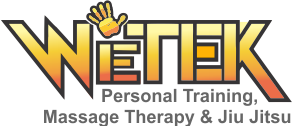We love to Roll, we love to play various guards, the squeezing and holding space tightly with our legs makes them strong and sturdy, which allows for effective control. While this is all true, there is something which if not addressed could be detrimental to your ability to move correctly with balance and strong posture.
You see, not to make this too long or boring , I hope you stick with me my dear reader to the end, as this will only benefit you. Please think together, optimal alignment is when the knees track over the 2nd and 3rd toes while standing. However, a I will discuss some compensation which may occur.
The knees not staying in line with the toes, which could result from a muscle imbalance……
In the case of Jiu Jitsu, one may conclude that this happens due to the adductors being overly tight from constant squeezing of the thighs while grappling as this is a huge component of control in many positions (closed guard, mount, half guard, deep half etc).The adductors pull the femur into adduction when over active and makes it difficult to keep the knees aligned over the toes. Therefore, what ends up happening is that the Glutes become less strong due to constant squeezing of the thighs, and not enough Glute engagement. This causes the knees to not stay in proper alignment and throws off the center of balance in your body, due to the fact that biomechanically speaking , the body wants you to strive for proper alignment while standing, sitting and moving, and this muscle imbalance throws a monkey wrench into the whole thing.
Lastly, if you add in the fact that in todays work force we spend much time sitting, which further deactivates the glutes, and shortens the hip flexors. now our standing posture is even more thrown off. Our glutes are weakened and cannot properly assist in stabilizing our Lumbo Pelvic Hip Complex, our adductors are overly tight which pulls our knees inwards which throws off our alignment. Also, the hip flexors are shortened due to constant sitting which pulls the hips into an anterior pelvic tilt, and also throws off our center even more.
Tying this into Jiu Jitsu, or any other sport which requires posture, along with daily living. This imbalance causes us to shift our weight incorrectly. The body will now try to fight to keep us functioning and fix the problem, however this problem cannot get fixed on its own, the body will just compensate in other ways by placing stress on other parts of the body to keep us moving.
This creates a problem while grip fighting, as well as trying to get our posture to fight out of any situation. As the problem is biomechanics and no matter how hard we posture up, the problems in the joints which are coming from previously mentioned things create a much bigger problem.
In Conclusion, if we recognize these signs, in order to enjoy our loved sport, enjoy our body in motion along with a pain free mobile lifestyle: Kindly follow this rule :
Stretch the overactive, strengthen the underactive. Then we will have a much easier time with our movement in base and balance, and may prevent future problems.
Thank you for reading and stay tuned for more,
Best,
Wetek Personal training and Massage Therapy

Recent Comments